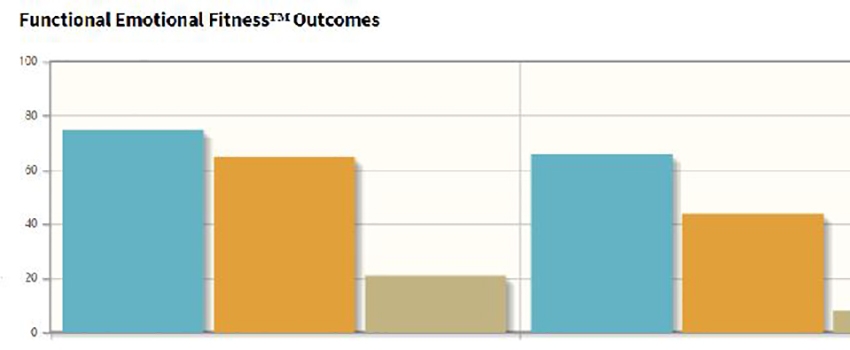
Since Sigmund Freud discovered talk therapy and psychoanalysis in the late 1800’s, there has been little advancement in a modality for behavior change that works. One of the reasons for this is a means to measure whether one is making progress with a client. Neuroscientists and psychiatrists claim the processes of the human mind and the physiology of the brain is too complex to measure accurately. This could not be further from the truth if we start by looking at a couple of fundamental issues and simply ask… “What questions need to be answered to resolve the issue of taking control of what controls me?”
The first question of “What controls me?” is uncomplicated. It is the subconscious. Our conscious mind exists solely to receive and deliver everything we have ever seen, heard, felt, tasted or smelled to the subconscious. The subconscious uses this information to determine how we respond emotionally to our world.
This leads us to the next question of “What determines my behavior?” This is an important question because one’s emotional state determines one’s behavior, therefore, it does not make sense to attempt diagnosis based on behavior while skipping the emotional driver. The next question is “What determines human emotion?” The subconscious stores all information one has ever taken in, so the answer to this question is simply “information” stored in the form of words and pictures.
In its simplest form, the mechanism of the subconscious that drives human behavior looks like this.
Word – Picture – Emotion - Behavior
If we can agree thus far, the next question would be “How do I get control of the information or programming in the subconscious?” The answer is to understand how the subconscious works.
When one understands how the subconscious works, you can begin the process of taking control. At this point, one also needs a means of measuring the outcomes and what is most important to measure.
Since we have established that emotion drives behavior, it is emotion that we need to measure if we are to have any impact on our behavior.
There are emotional checklists in relatively wide use, with most used to determine whether you are depressed or not. When this is determined, you have just signed up for a variety of pharmaceuticals and therapy that can last years in order to get the right combination to maybe get better? This is not the case with Subconscious Restructuring™. SR™ measures one’s emotional state as a baseline and improves on these numbers in as little as four hours* without meds, labels, or personal history.
SR™ accomplishes this by guiding you through the process of how to interrupt, restructure and reprogram subconscious processes that may put one in an emotional state which drives behavior that does not work. The bottom line is without asking a couple of very fundamental questions, one will never be able to resolve the biggest issue of our society, and this is our mental health.
It is time for all in mental health and coaching to prove what they say they can produce and to stop guessing what their outcomes will be based on subjective observational behavior.
About Kelly Burris, PhD, MBC
Kelly Burris has defined ‘Normal’ in an industry, that only defines broken or disordered. He is the developer of the empirically sound Subconscious Restructuring™ process and founder of Burris Institute. With over 150 medical references Subconscious Restructuring™ represents a scientific breakthrough in mental health, and it has done this without meds, labels or personal history.
As part of the Burris, ecosystem Subconscious Restructuring™ Practitioners can manage, track and interact with current and future clients after certification on BurrisConnect.com. This same ecosystem enables corporate, military, and educational entities to supervise and monitor the performance of their internal Subconscious Restructuring™ (mental health) infrastructure in the cloud.
